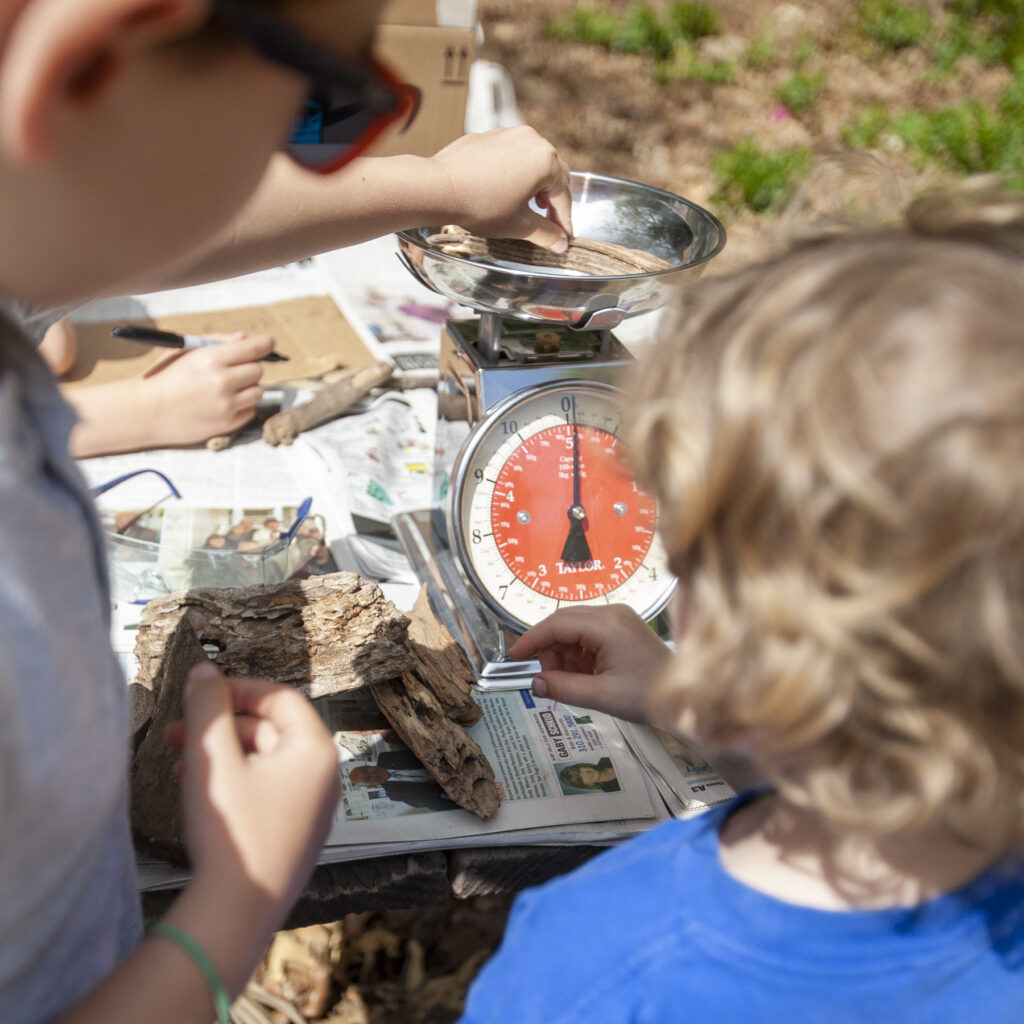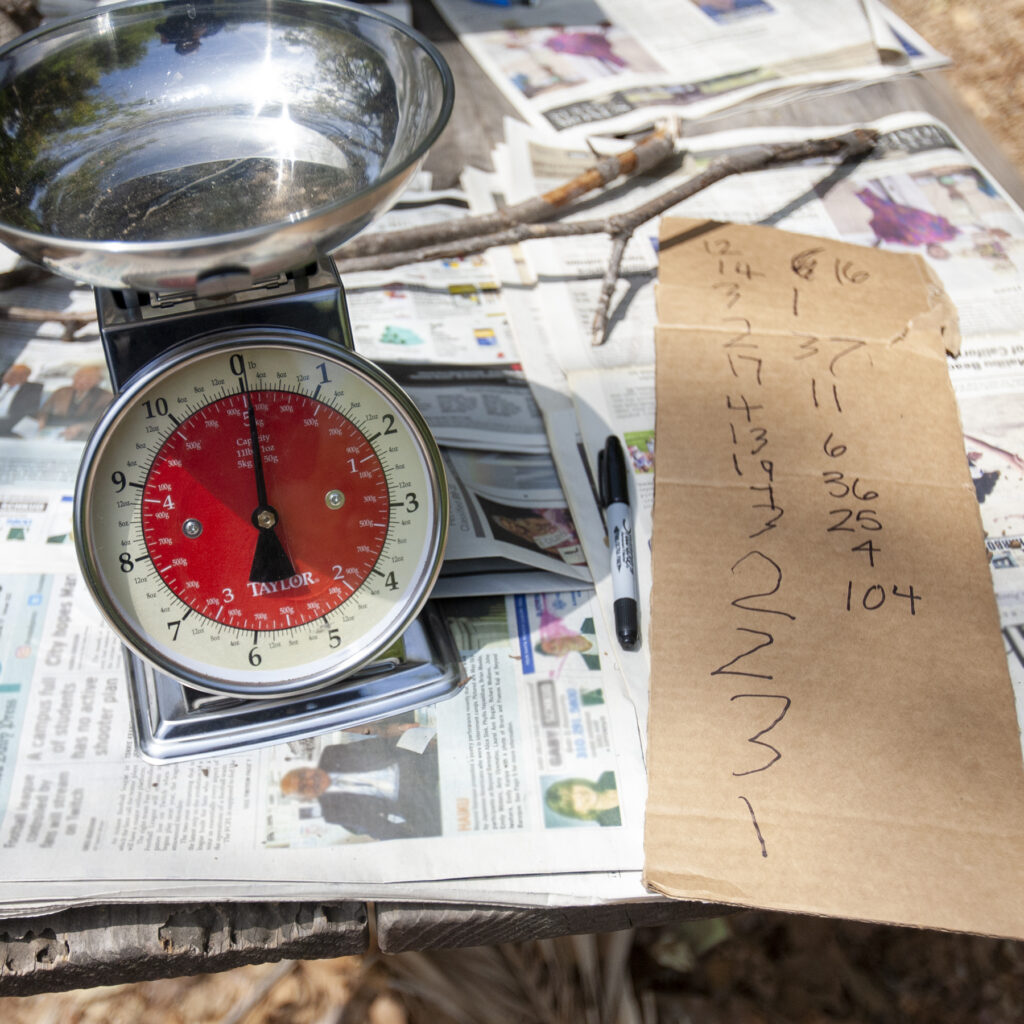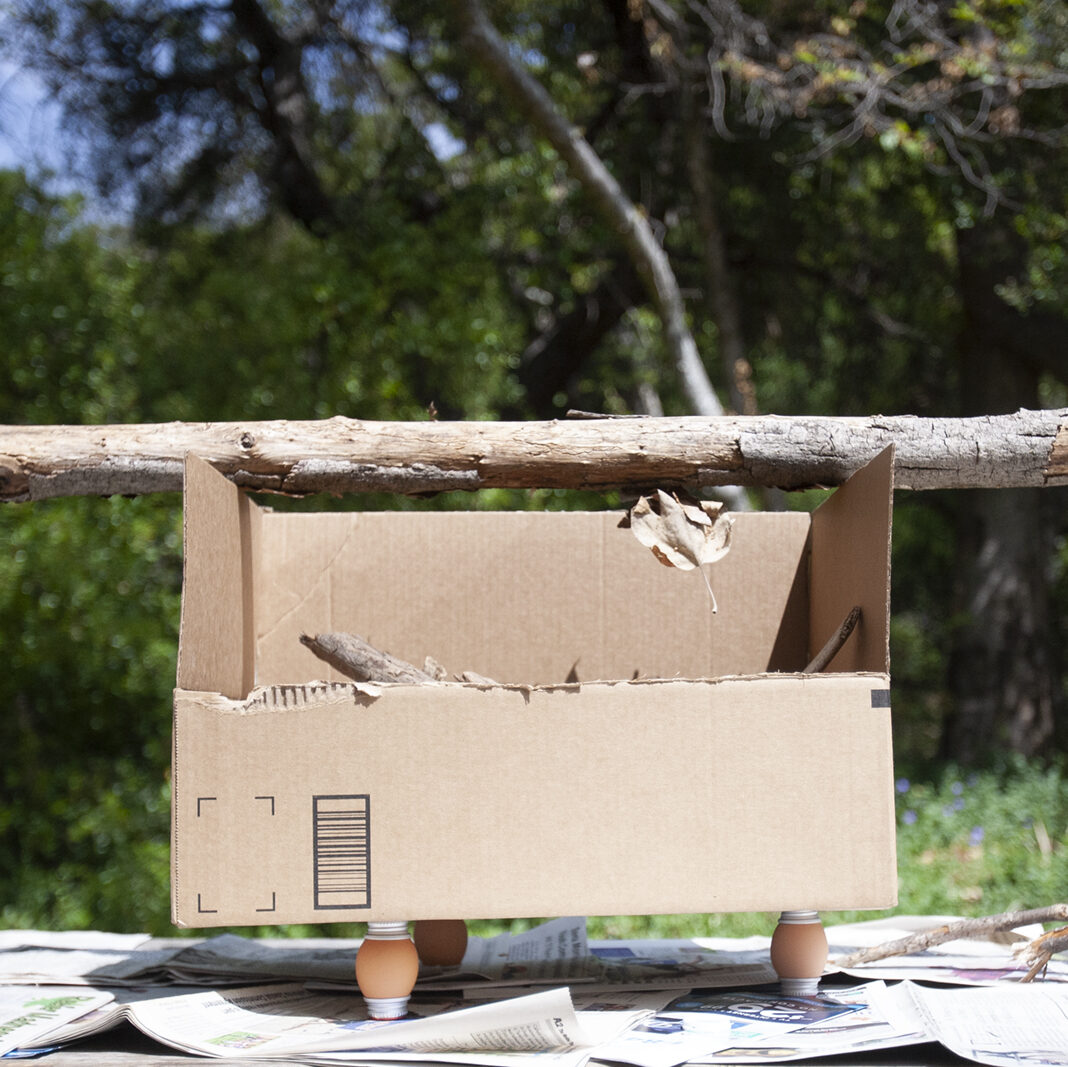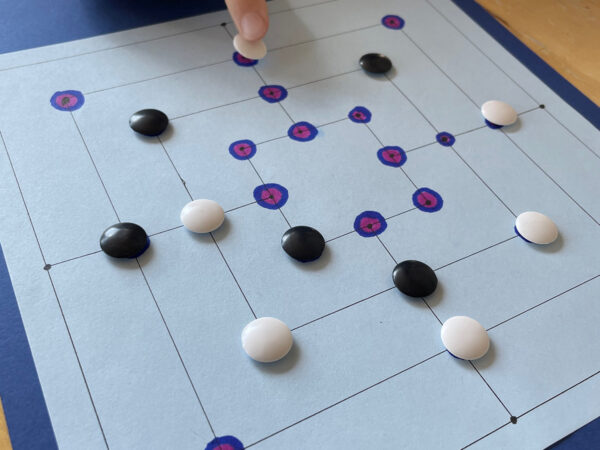OOOHH! This one is HUGE. This one HAS to break them.
A young tinkerer stood in the meadow, holding a giant branch over his head. The branch, longer than he was tall, was one of the many heavy items that the kids had found for their egg strength experiment.
The boy weighed the branch, then carefully balanced it on top of the rocks, bark, and sticks already resting in the “crushing box.”
To the group’s surprise, the branch did not break the eggs. There was a brief pause. Jaws dropped. Tiny arms were thrown up in disbelief. The children processed the information, and then, eyes darting around the forest floor, the hunt for heavy things continued.

They gathered, weighed, recorded, and watched. Time and time again, they were shocked as the eggs continued to support additional weight.
The kids ran around grabbing anything they could find that would incrementally add to the weight of the crushing box.
Running around the forest and using the kitchen scale were fun. But the real power of this experiment is its ability to challenge and change pre-exiting ideas. All of the kids had prior experience cracking eggs in the kitchen and couldn’t imagine how much weight such tiny, “fragile” eggs could support. It was a simple reminder that sometimes, nature’s power is subtle.
Experiment Details
Opening Discussion
Ask the kids what they know about eggs. Do they like to eat eggs? What do they look like? What are the shells like? They will likely say that eggs crack, or are fragile. If they don’t get to this concept on their own, ask them if eggs are strong. Why? Why not?
Explain that you are going to do an experiment to test the strength of eggs. Ask them to guess how much weight an egg can hold before it cracks, and record their hypothesis.
Note: It helps to give kids a point of reference for this type of question. For example, some common objects and weights are listed below:
- Baseball or football: 1 pound
- Gallon of water: 8 pounds
- Typical house cat: 9 pounds
- Large watermelon: 20 pounds
- Typical German Shepherd: 30 pounds
- Giant bag of dog food or sack of potatoes: 50 pounds
Experiment Setup

This experiment can get messy, so lay down some newspaper to start.
Use bottle caps, or something similar, to keep the eggs from rolling. For each egg, place a bottle cap upside-down on the newspaper, like a cup. Then place the egg in the bottle cap. Top the egg with another, right-side up bottle cap, like a hat.
Arrange the eggs in a triangle formation, and top them with a cardboard box for holding the weights. Try to distribute the box evenly over the eggs, and spread the eggs somewhat close to the borders of the box.
Calibrate your kitchen scale with the kids, and you’re ready to start!
Experiment Procedure
Have the kids gather heavy objects. For each of the objects:
- Weigh the object.
- Record the weight on a large tally sheet.
- Carefully add the weight to the box. (Be sure not to toss the object in, or the box can become unbalanced and you will be adding force that you didn’t measure.)
- Once the eggs crack, total up the recorded weights using a calculator (or for older kids, by hand)
Learning Concepts and Questions
This experiment provides the opportunity to introduce several science and math concepts.
- Measurement: Learning how to calibrate and read the scale
- Density: Why are some of the small objects heavier than some of the large objects?
- Writing: Recording the individual weights of the items
- Addition – totaling the individual weights
- Division – Divide the total weight by the number of eggs to calculate the individual egg strength.
- Biology – How have the eggs adapted to be both strong and fragile?





